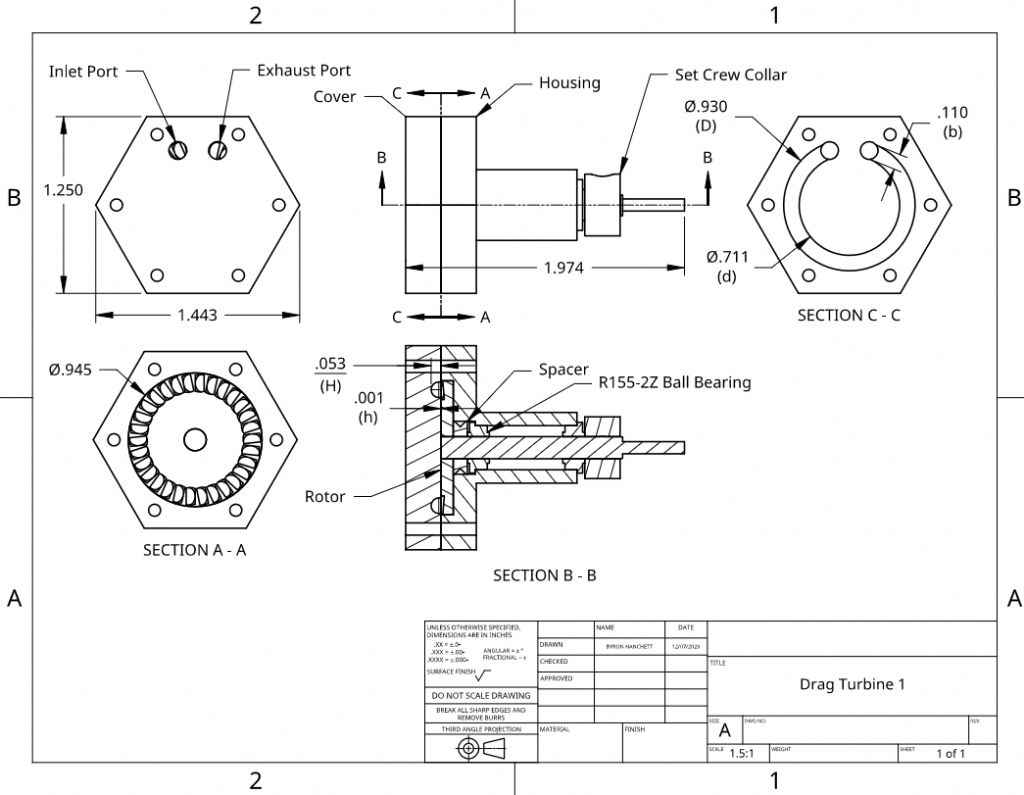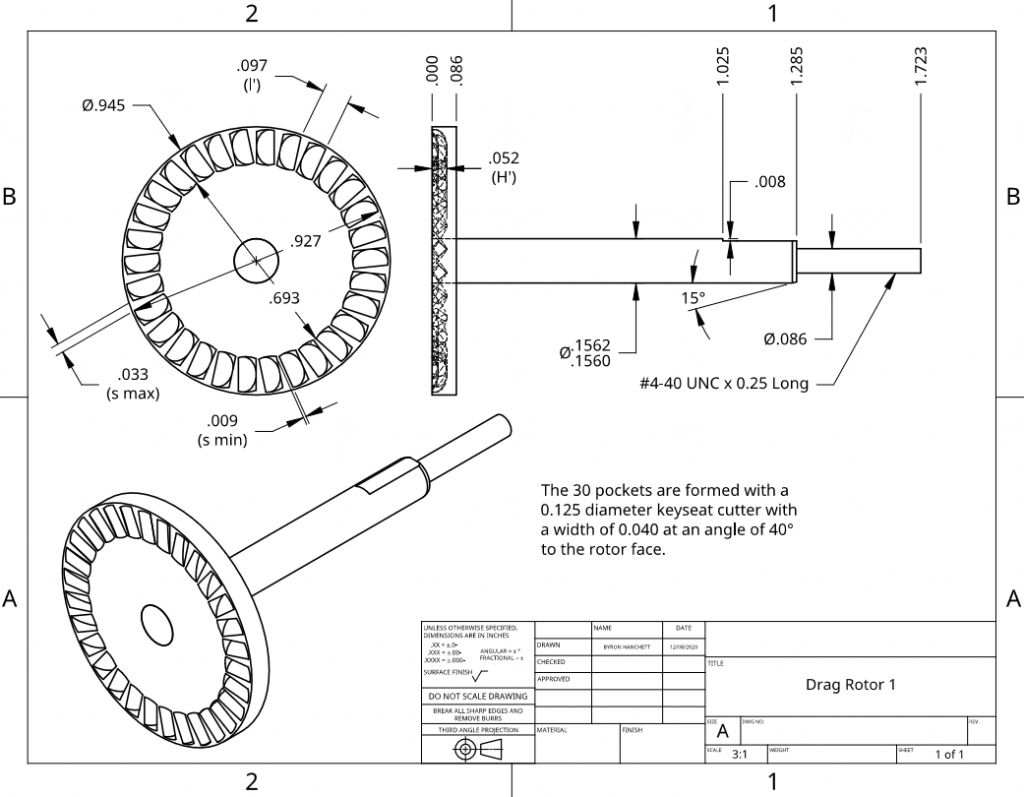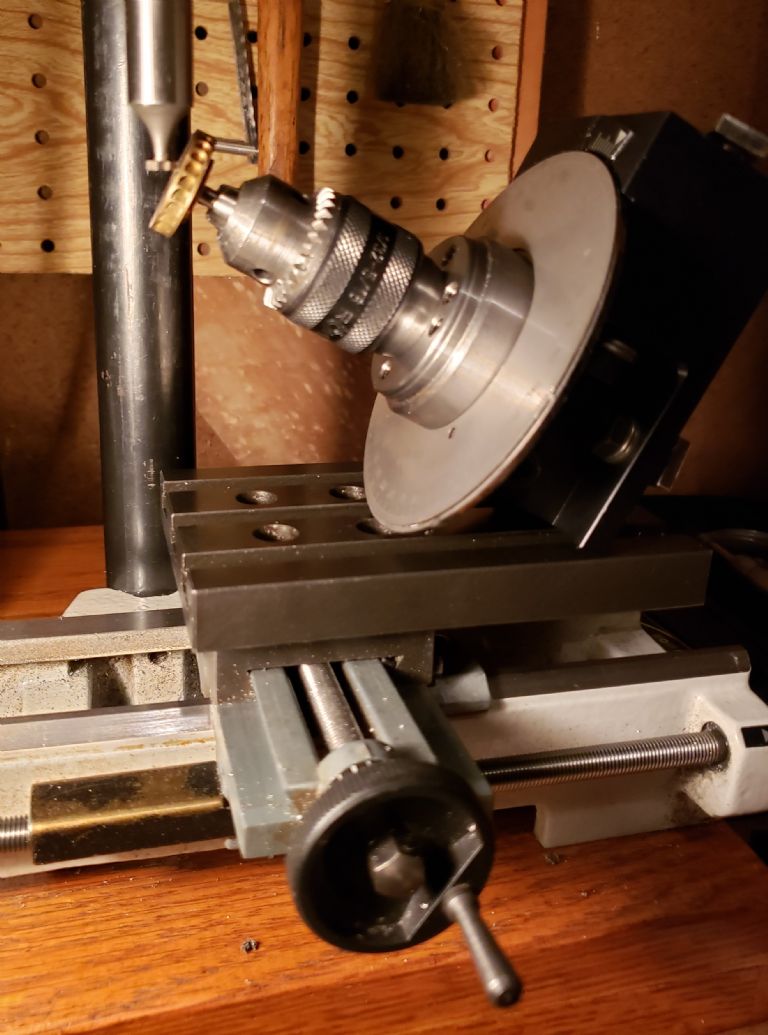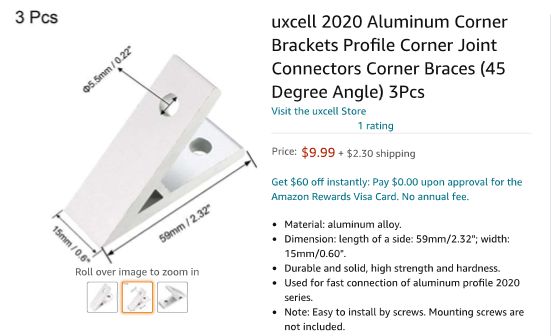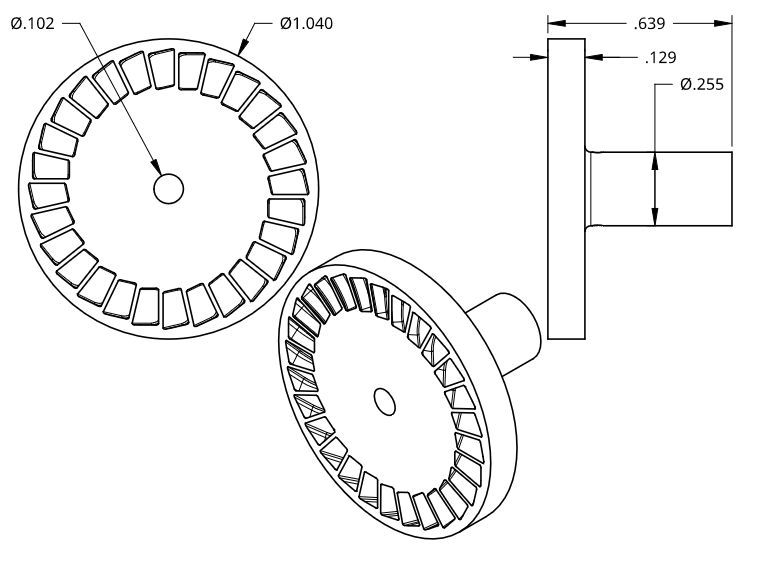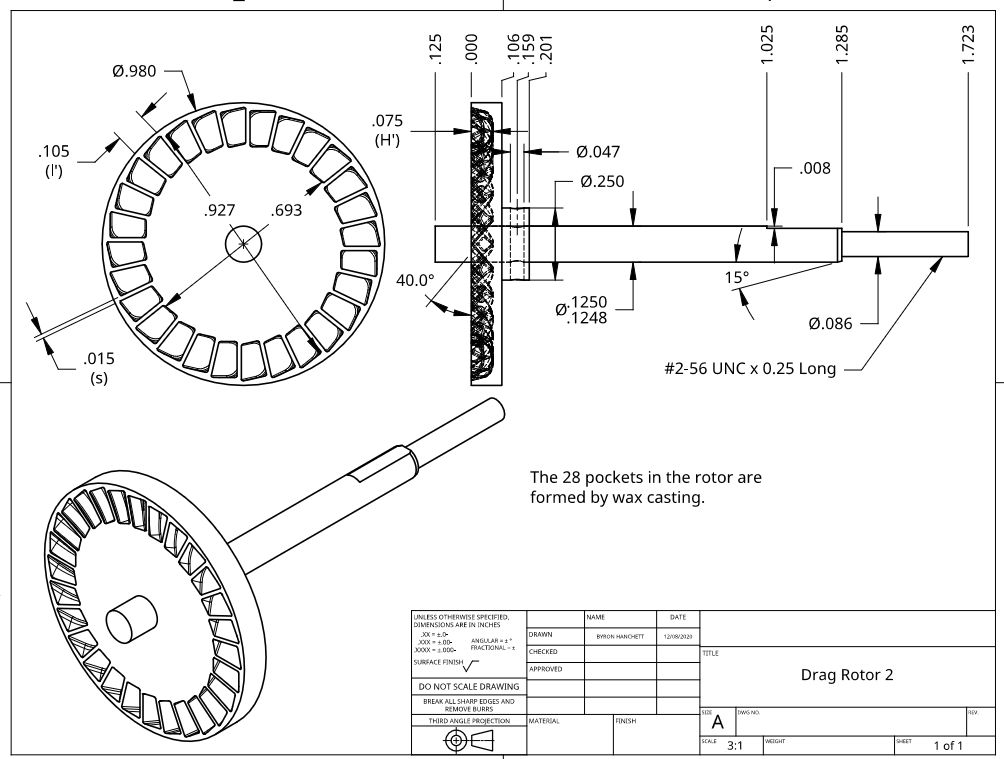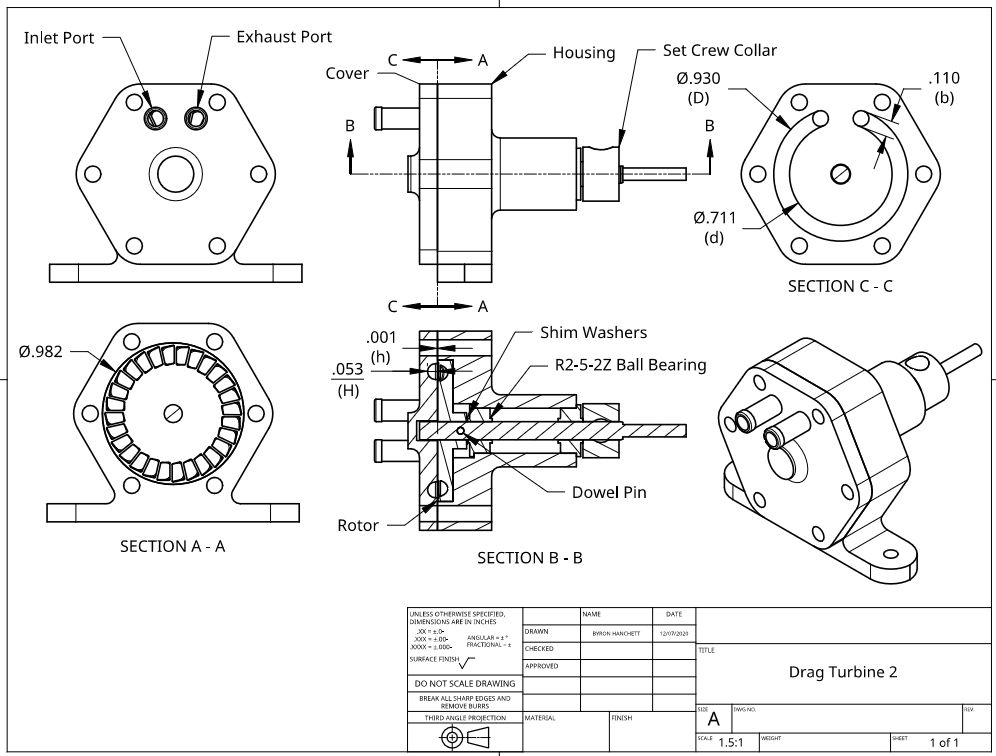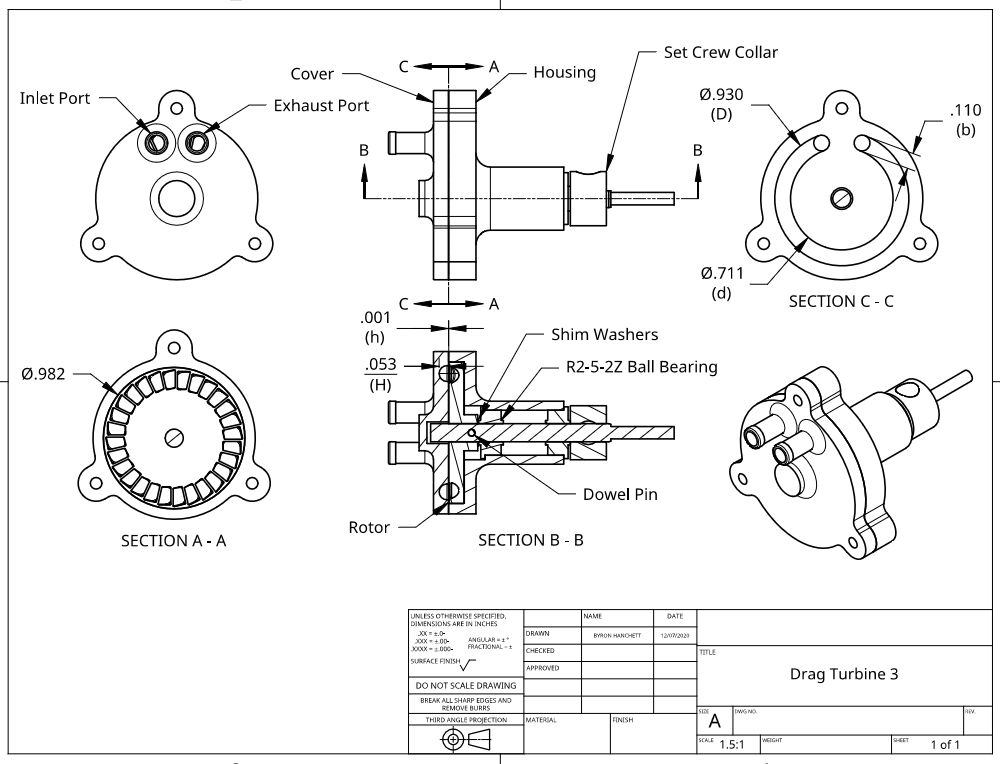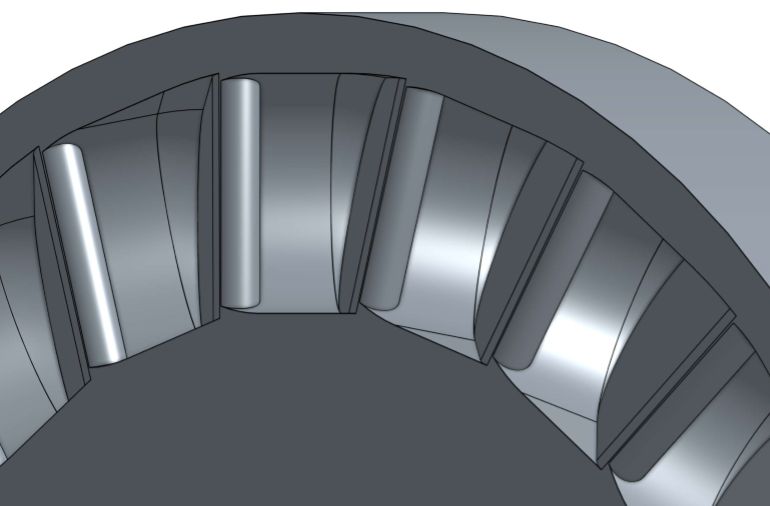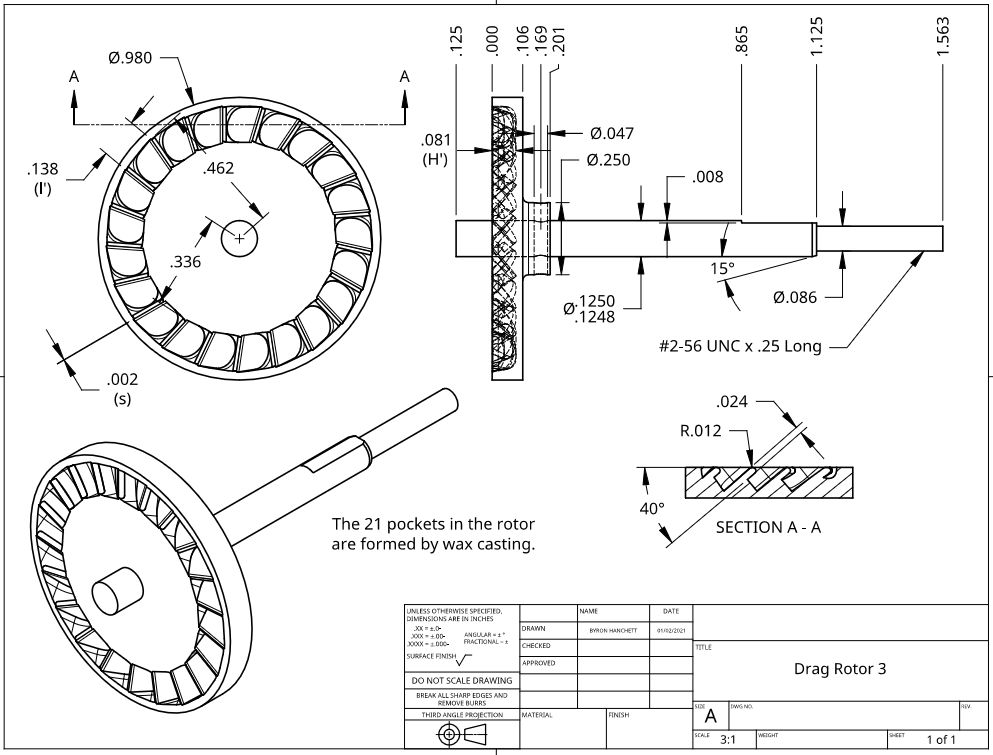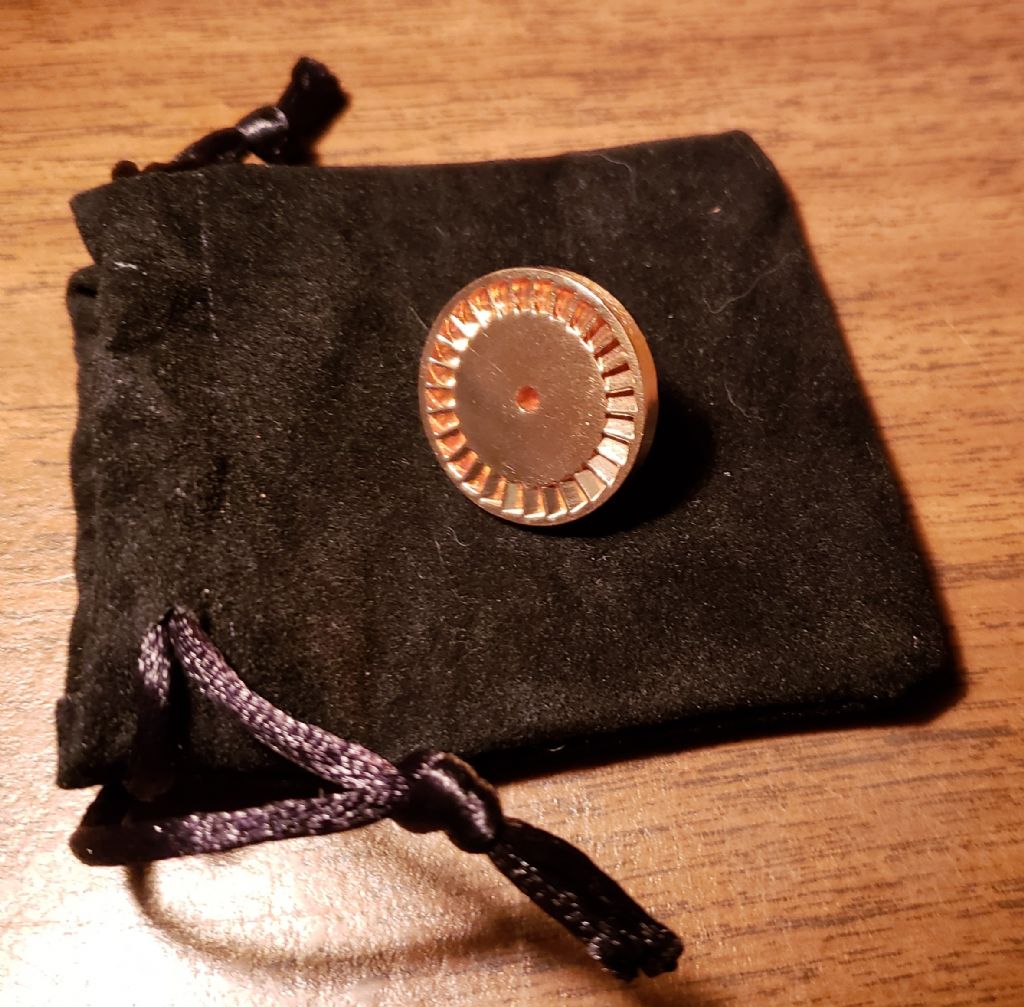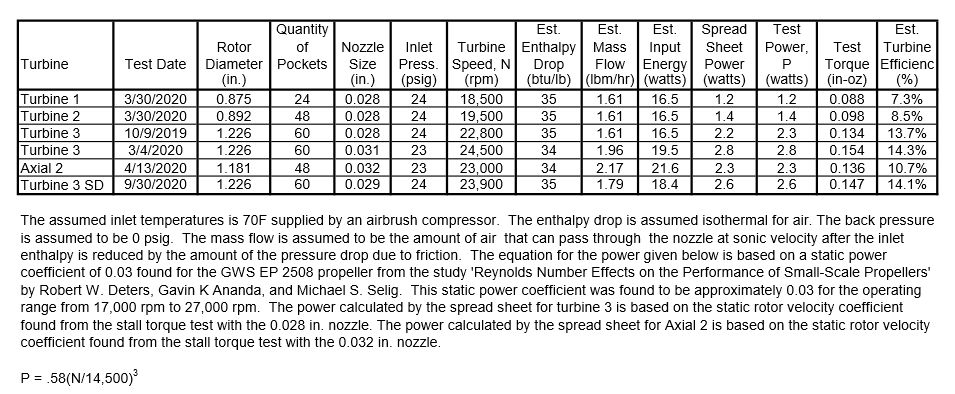While working on the cast housing and cover plate, I asked Shapeways what the minimum allowable thickness was and was given this link Shapeways Materials. Since I had already looked at the materials, I took a closer look and found there was a separate tab called ‘Design Guidelines’. This section gave the minimum thickness as 0.6mm for supported or unsupported sections with a natural finish. Since the minimum thickness of the blades of Drag Rotor 2 is approximately .01” (.3mm), I was concerned that the rotor would not be able to be cast as designed even though it passed the initial review by Shapeways. I mentioned what I had discovered to Shapeways and Mitchell Jetten of Shapeways Customer Service sent me the following response.
“The minimum acceptable wallthickness for this material is 0.6mm. For details, parts that stick out, you should be able to go down to as low as 0.35mm thick and 0.35mm long. If the detail sticks out more than 0.35mm this will be classified as wall instead and would require to be 0.6mm thick.
The main reason we have this guidelines is because we need to actually be able to 3D print the wax model, clean this and create a negative mold around this before we are able to cast the model in brass. Since the wax material is really fragile, going below this guideline greatly increases the risk of parts breaking or warping.
On our materials page by clicking on the Design Guidelines tab you can read more about this:
That said, our checking process is manual, it does happen from time to time that a model that is below the design guidelines gets approved. In your case the model was successfully printed and cast, however it often also happens that a model gets accidentally accepted and then gets printed or cast but fails at either of these stages, which will result in the model being rejected".
After receiving this response I was notified by Shapeways that Drag Rotor 2 was cast and cleaned up successfully and has been shipped. I thought I would share Mitchell's explanation of the importance of the minimum thickness, The reason the blades of Drag Rotor 2 were able to be cast was probably because their unsupported length is so short.
Edited By Turbine Guy on 03/01/2021 20:11:36
Turbine Guy.


